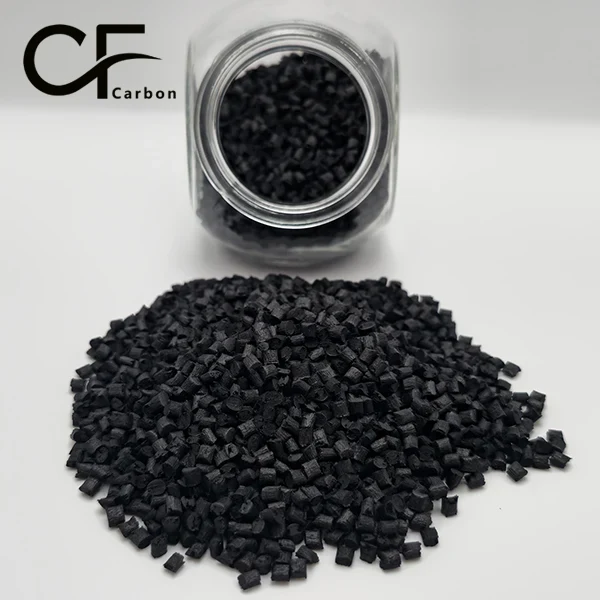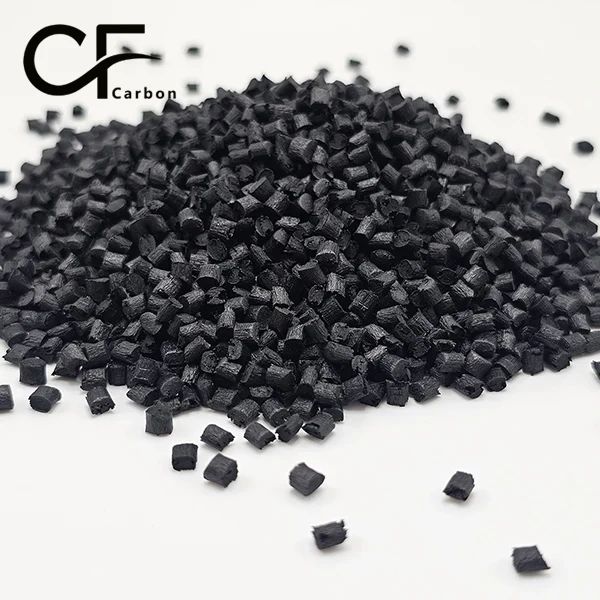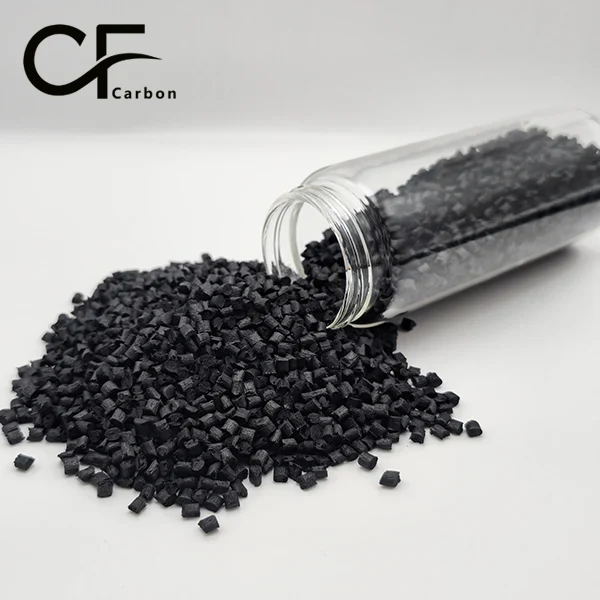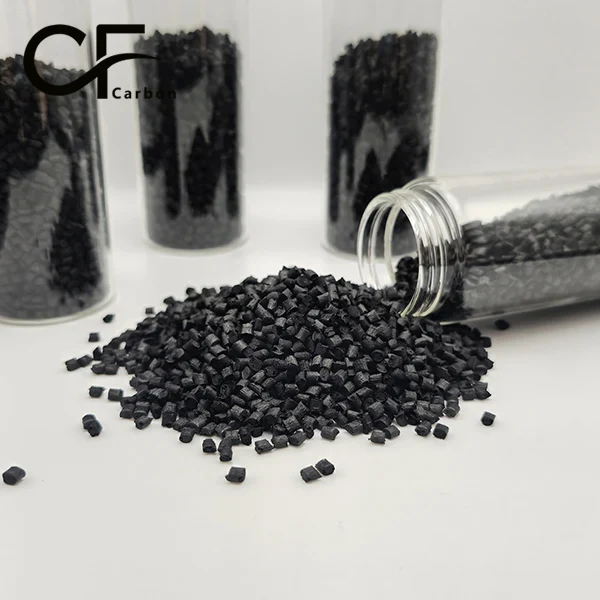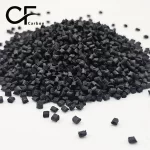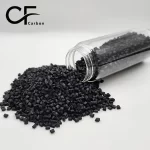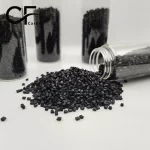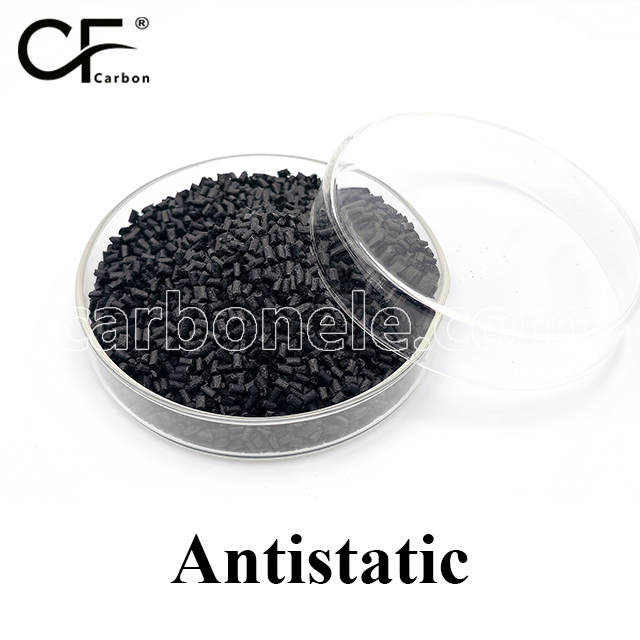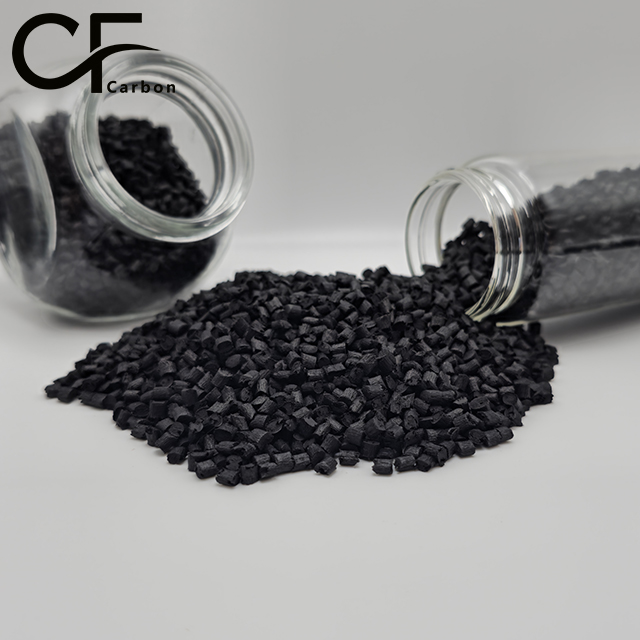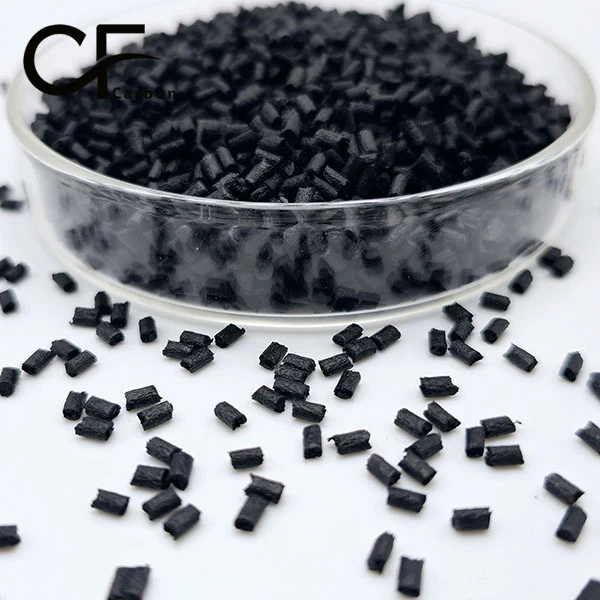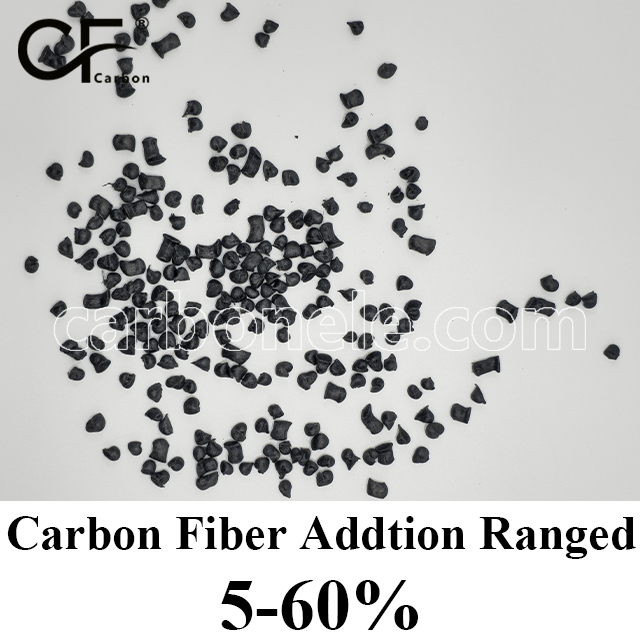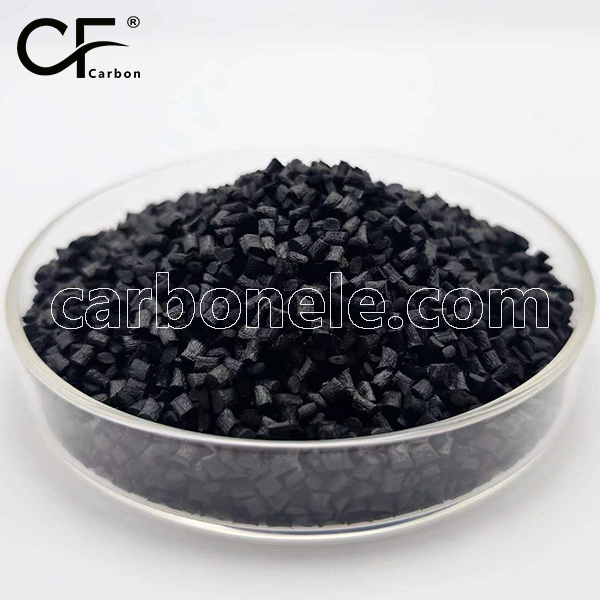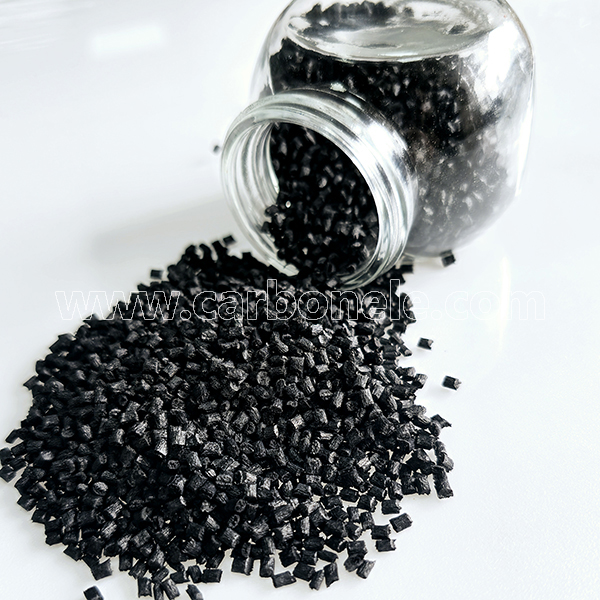
Thermoplastic CF Composites PA6 CF10 PA6-CF-BCA1
1: Tensile strength reaches 120 MPa
2: Flexural strength reaches 180 MPa
3: Surface resistivity 10⁶-10⁸ Ω
4: Flexural modulus reaches 6.5 GPa
5: Shrinkage rate only 0.8%
- Manufacturer: Carbon New Material
- OEM/ODM: Acceptable
- Color: Black
- Free samples: ≤10kg
- MOQ: 100kg
- Port: Xiamen
- Model: PA6-CF-BCA1
- Fillers: SCF
I. PA6 CF10 Overview
PA6 CF10 PA6-CF-BCA1 is a 10% carbon fiber reinforced nylon 6 composite utilizing specialized interfacial modifier to enhance fiber-matrix bonding. This Thermoplastic CF Composites significantly improves mechanical properties while maintaining excellent processability.
II. PA6 CF10 PA6-CF-BCA1 Key Properties
1. Enhanced Mechanical Strength
Tensile strength: 120 MPa, flexural strength: 180 MPa – 80% improvement over unreinforced nylon.
2. Improved Rigidity and Stability
Flexural modulus: 6.5 GPa, CTE: 3.2×10⁻⁵/℃ ensures dimensional accuracy.
3. Superior Anti-static Performance
Surface resistivity: 10⁶-10⁸ Ω meets ESD protection requirements.
4. Chemical Resistance
Excellent resistance to oils, chemicals and solvents.
5. Processing Advantages
MFI: 25g/10min (275°C/2.16kg), shrinkage: 0.8% for complex parts.
III. Primary Applications
This Thermoplastic CF Composites serves automotive components, electrical connectors, industrial parts, medical housings and office equipment.
IV. PA6 CF10 PA6-CF-BCA1 Electronics Application
Used in server HDD frames, this material reduces weight by 25% while maintaining 10⁷Ω surface resistivity. Implementation in a major server brand achieved 64g frame weight (from 85g) and reduced data error rate by 0.05%.
Request PA6 CF10 PA6-CF-BCA1 data sheets, technical consultation, quotes or catalogs. Note: Thermoplastic CF Composites properties vary by resin matrix, fiber content and manufacturing process. Comparative testing recommended for specific applications.
CFRTP VERSUS CFRP
1. CFRTP demonstrates significantly faster processing time (5 minutes) compared to CFRP (45 minutes), representing a 90% reduction in manufacturing duration. 2. In terms of recyclability, CFRTP outperforms CFRP by a large margin, scoring 9 on a 1-10 scale versus CFRP's score of 2. 3. CFRTP exhibits superior impact resistance (90 kJ/m²) compared to CFRP (65 kJ/m²), showing approximately 38% better performance in this category. 4. While CFRP has higher temperature resistance (220°C) than CFRTP (180°C), both materials maintain adequate thermal performance for most applications. 5. CFRTP offers greater design flexibility (rating of 90) compared to CFRP (rating of 60), providing more versatility in manufacturing and application scenarios.

CFRTP VS. METALS
1. CFRTP exhibits the lowest density (1.50 g/cm³) among all compared materials, significantly outperforming traditional metals like steel (7.85 g/cm³) and copper (8.96 g/cm³), and even surpassing aluminum (2.70 g/cm³) and aluminum alloy (2.80 g/cm³). 2. In terms of strength-to-weight ratio, CFRTP demonstrates superior performance at 120 kN·m/kg, more than doubling the ratio of aluminum alloy (68 kN·m/kg) and far exceeding steel (26 kN·m/kg) and copper (14 kN·m/kg). 3. While steel shows the highest stiffness (200 GPa), CFRTP (150 GPa) outperforms aluminum (70 GPa), aluminum alloy (72 GPa), and copper (110 GPa), offering a favorable balance of rigidity and lightweight properties. 4. CFRTP achieves the highest corrosion resistance rating (9 on a 1-10 scale), surpassing all other materials including aluminum alloy (8), aluminum (7), copper (6), and steel (3), making it ideal for corrosive environments.
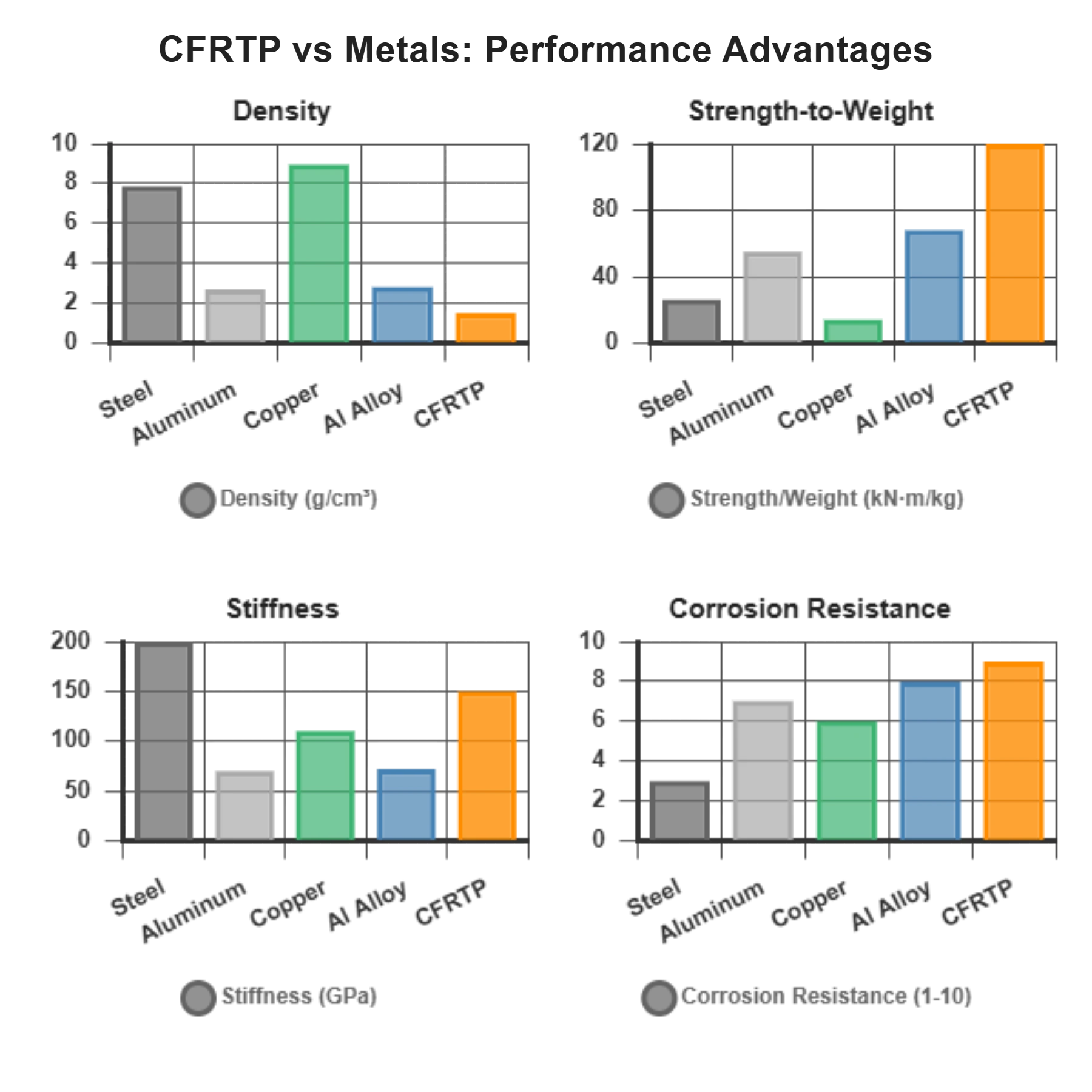


Frequently Asked Questions
Carbon (Xiamen) New Material Co., Ltd. aims to provide buyers with "one-stop" worry-free high-quality services. Here you can find all information about carbon fiber engineering plastics. If you still have questions, please send us an email for consultation!
-
How can I contact the manufacturer of a product that interests me?
When you find a product you are interested in, you can contact the manufacturer directly by sending an email and we will get back to you as soon as possible.
-
How do I find the products that interest me?
All you need to do is enter the keyword, product name in the search window and press the Enter key on your keyboard. Your search results page will then be displayed. You can also search within the product category pages on the home page. Each category is divided into subcategories, allowing you to refine your search and find products that interest you.
-
Where will I find a buying guide?
Please contact our after-sales service directly and we will provide you with a comprehensive operating guide.
-
What are CF Reinforced Thermoplastic Composites?
CF Reinforced Thermoplastic Composites are materials where carbon fibers are incorporated into a thermoplastic matrix. They combine the strength and stiffness of carbon fibers with the processability and recyclability of thermoplastics. For instance, they are used in automotive parts like bumper beams.
-
What are the benefits of CF Reinforced Thermoplastic Composites over traditional composites?
The key benefits include faster production cycles, easier recyclability, and better impact resistance. They also offer design flexibility. An example is in the manufacturing of consumer electronics casings where complex shapes can be achieved more easily.
-
How are CF Reinforced Thermoplastic Composites processed?
Common processing methods include injection molding, extrusion, and compression molding. Injection molding is widely used for mass production. For example, in the production of small components for the medical industry.
-
What industries use CF Reinforced Thermoplastic Composites?
They are utilized in aerospace, automotive, medical, and sports equipment industries. In aerospace, they can be found in interior components. In the medical field, they might be used in prosthetics.
-
How does the carbon fiber content affect the properties of the composites?
Higher carbon fiber content generally leads to increased strength and stiffness but may reduce ductility. A moderate content is often balanced for specific applications. For example, a higher content might be preferred in structural parts of a race car.
-
What are the challenges in using CF Reinforced Thermoplastic Composites?
Challenges include higher material costs, complex processing equipment requirements, and ensuring uniform fiber dispersion. Issues with adhesion between the fibers and the matrix can also arise. An example is in achieving consistent quality in large-scale production.







